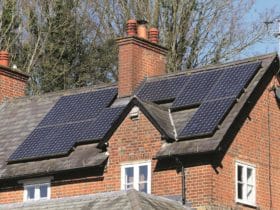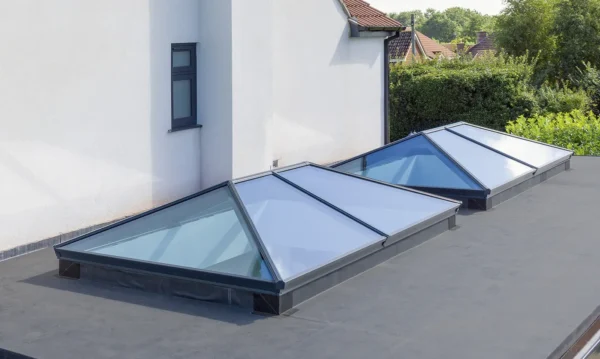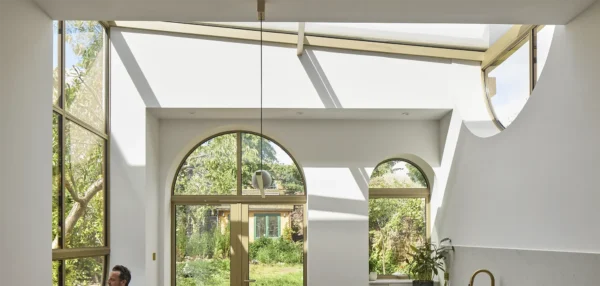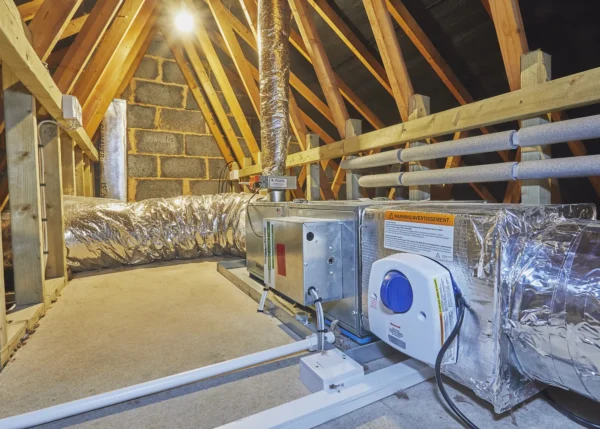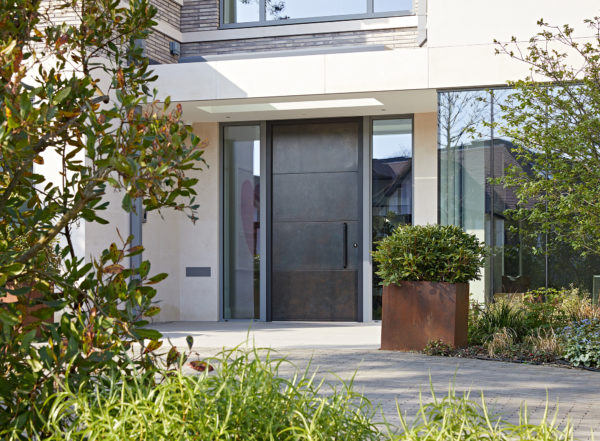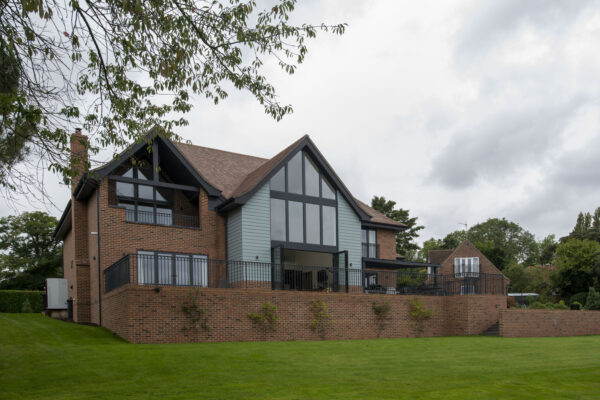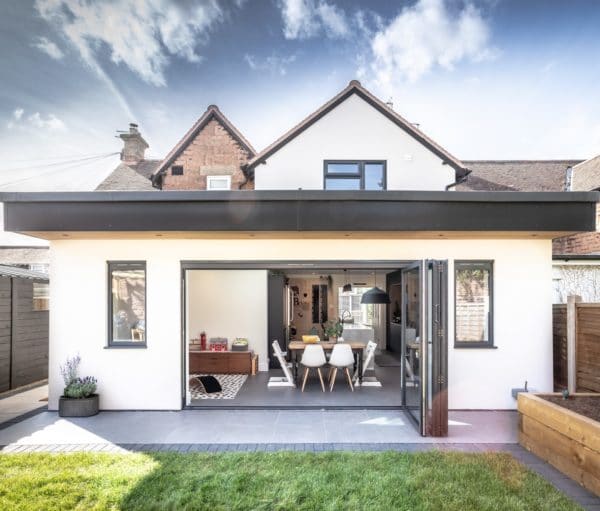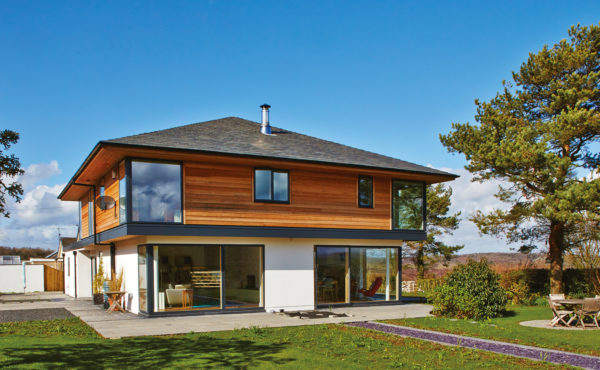In The Frame: Designing & Building a Passivhaus
Oak frame design and build specialist Oakwrights is running an insightful podcast and video series – In The Frame – providing insight right the way through your self build journey, from design to finance, finishes and more.
Here’s a taster of founder Tim Crump in conversation with Andrew and Linda, who have successfully built a Passivhaus oak frame eco home:
Tim Crump: Today I’m here in rural Herefordshire, in a beautiful hidden, valley with Andrew and Linda. We’re going to talk all about the design and building of a Passivhaus – and the journey they have taken right from the initial idea all the way to us sitting here in this wonderful home. So, when did you realise you wanted to self build a Passivhaus?
Andrew: I suppose we decided that we wanted to move in about 2013, and we were keen to run a small B&B. One day we happened to go past a barn conversion and thought ‘this is rather nice – all these beams’. But then we couldn’t find the right barn to convert, and the natural progression from there was to build our own.
Tim: Now that’s interesting. I started off my career as a carpenter renovating barns, and you do have to make a lot of compromises. They look wonderful, but when you start to think about how you would like to live, there are quite a few compromises. So that’s where designing and building your own barn-style home comes in.
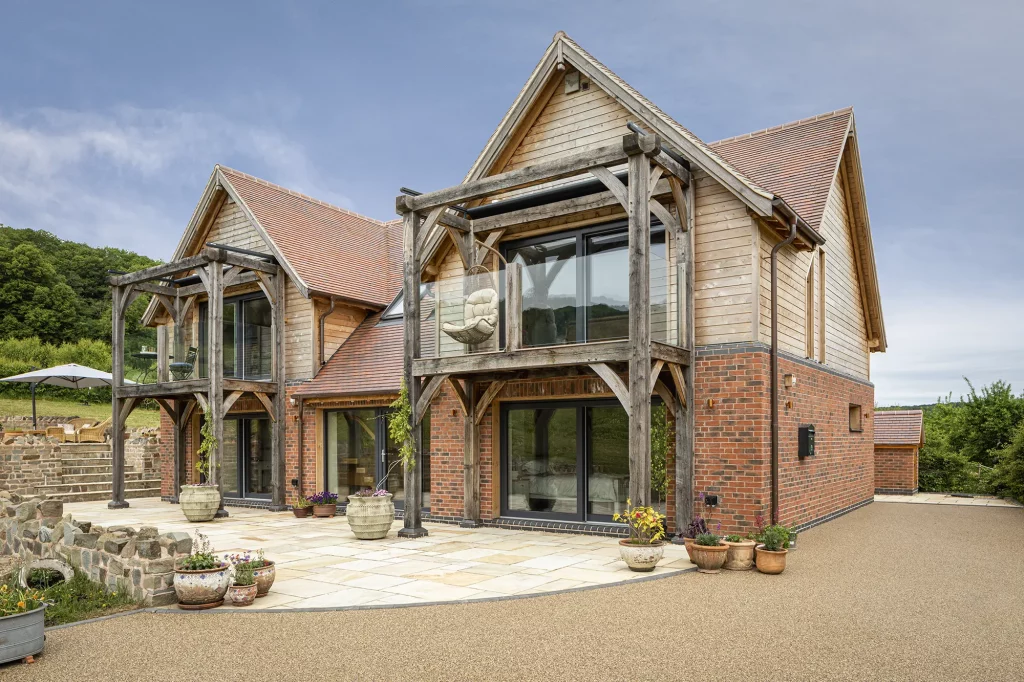
The finished Passivhaus looks beautiful on its countryside plot and will deliver low-energy living for generations to come
Andrew: Yes, and we went to a number of self build exhibitions and found Oakwrights, and it just so happened that I spoke to you, Tim. You mentioned Passivhaus and I tried to show I had some idea of what you were talking about, although I’d never heard the phrase before. But it moved on from there. We looked things up and decided this was the way we wanted to go: an oak frame Passivhaus.
Tim: We live in the world of self build and construction, so sometimes it’s easy for us to forget that the majority of people don’t necessarily know what a Passivhaus is, how it works and what the benefits are – so we need to try to help get that message across.
Andrew: Our initial interest was the high level of insulation and keeping heating bills really, really low. What’s become far more significant, now we’ve built it, is that a Passivhaus is incredible to live in. The environment inside is just comfortable all the time everywhere. It’s the living experience, I think, that has taken over from the initial idea that this will be cheaper to run as a house.
Tim: It is beautiful here – there really is a pleasant atmosphere within the house. It’s lovely to go beyond the technical and construction side, and to sit in a home and really feel the benefit of the systems, processes and materials that go into creating a breathing wall system.
Andrew: We really enjoyed just about every moment. It was a fantastic experience.
Linda: It was the enthusiasm of the people we were working with, as well – with you guys and with our builders.
Tim: And the builder was Tom Ferber from Ferber-Young – a young chap who really loves what he does. The company’s passion really shows in their workmanship and what they’re like to build with. Getting to Passivhaus standard, with the high airtightness, insulation values and all the paperwork and design requirements, is a challenging process. So you need an enthusiastic builder who makes it great fun.
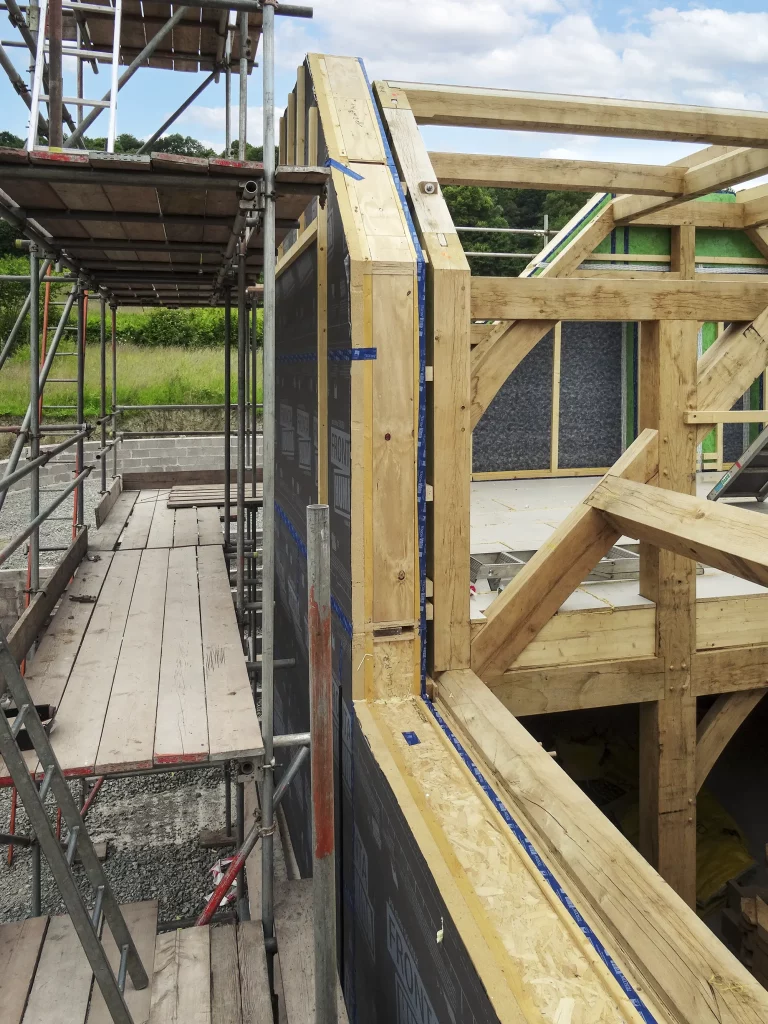
Oakwrights’ Wrightwall natural system encapsulates the oak frame to deliver excellent insulation and airtightness
Andrew: Yes and I’d add two things to that. One is their meticulous attention to detail, and the other is their willingness to build a Passivhaus. There’s a lot of work involved in designing a Passivhaus, but if it’s not built correctly, it won’t perform correctly. So you need that quality from your builder, as well, and we did here – we got our Passivhaus certificate!
Tim: On the design side, I think Passivhaus has something of a reputation for producing rectangular, monopitched white boxes. But it doesn’t need to be like that, as your house shows. You’ve got a beautiful oak frame, a fantastic super-insulated panel system, great foundations, clay tiles on the roof. In this hidden valley, I’m absolutely convinced this house will be here for hundreds of years – and how much more sustainable can you be?
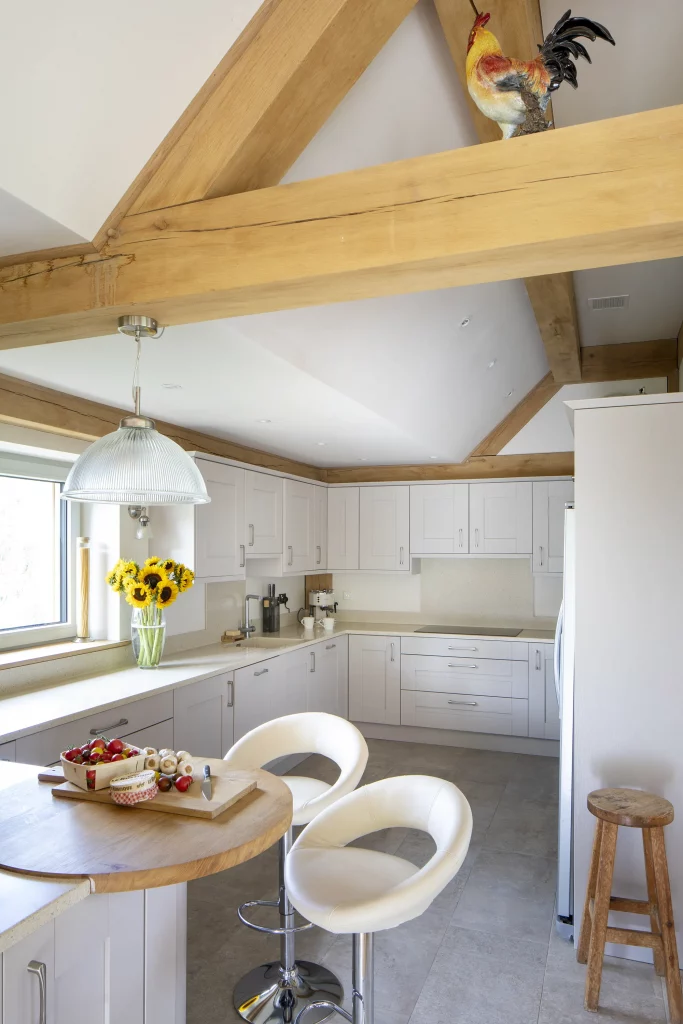
The stylish kitchen and Andrew and Linda’s oak frame Passivhaus
Andrew: What Oakwrights has designed is something that looks intriguing from the outside. And inside we’ve got very tall ceilings and an upside-down plan – we live upstairs for the views. It’s not a box: it’s fantastic, with different shapes and exciting things to look at.
Linda: I love the corners where the wood comes together at different angles – we’ve got the same in our bedroom. It’s a very calming, safe, quiet and peaceful place to be.
Tim: And what you have here with your Passivhaus is fresh air gently blown into every room, and all the stale air from kitchens and bathrooms being sucked out of the house. So, it’s a very healthy atmosphere to live in.
Andrew: That’s right. We can open our windows much earlier in the year than our neighbours, and keep them open much later in the year. When they’re shut, the mechanical ventilation system is the equivalent of having a window open – but with no draughts at all. So, you’ve constantly got 100% fresh air coming into the house, and 90% of the heat from the stale air going out of the house is recovered. So, it is constantly comfortable and fresh, 365 days of the year.
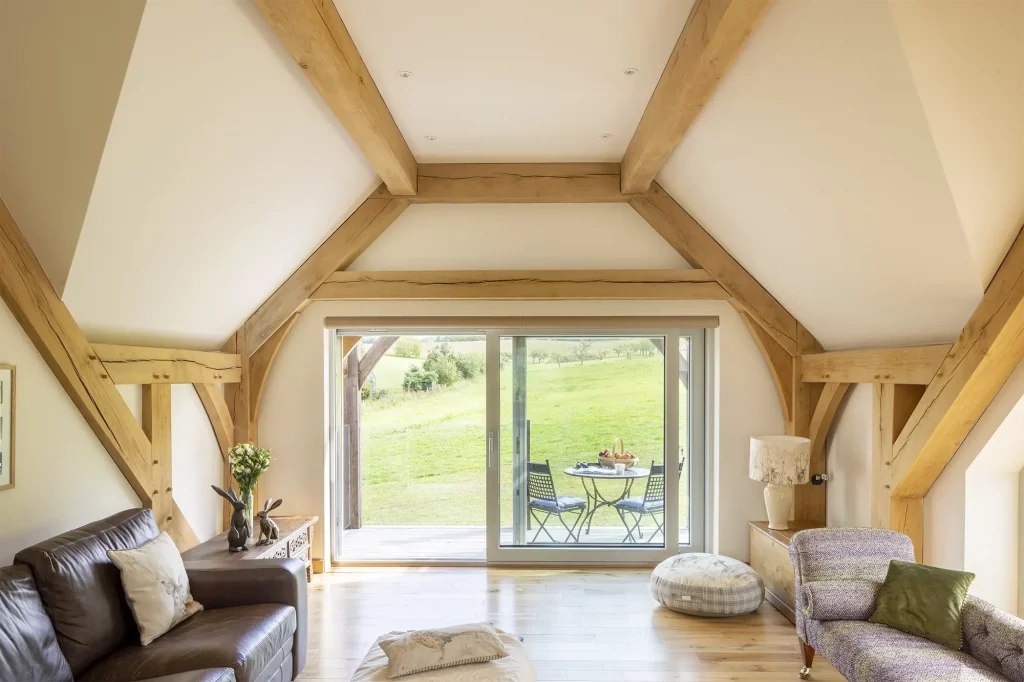
Andrew and Linda’s living room features a vaulted oak ceiling and two-panel sliding door leading out to the garden
Linda: When you say goodnight to guests, it doesn’t matter how long they take on the doorstep with the door open, because you don’t get a draught. As soon as you close the door you’re back to the temperature you were before.
Andrew: And when you open the door in winter, there’s this gentle warmth that seems to emanate from everywhere. And conversely in the summer, when you’re sweaty because it’s really hot outside, you open the door and there’s this coolness emanating from everywhere. It’s an even temperature throughout the year. We’ve got tiles in the kitchen up here with no heating underneath them. But you get up in the morning, on a cold winter’s day, walk straight into the kitchen to make a cup of tea and you wouldn’t notice you’d moved from a wood floor to a tiled floor.
Tim: And your idea with the B&B was to promote it as a Passivhaus experience – so anyone at the beginning of their journey could stay in the home and get a feel for what it’s like to live in a Passivhaus. So, how’s it going so far?
Linda: Fabulously! We get some people coming with technical questions, wanting to get straight in to see the plant room, while others ask more about the lifestyle side. They want to know whether it’s noisy, whether it’s true that it’s warm everywhere. I tell them I wander around this house and don’t even own a pair of slippers… by the time they’ve left, you can see they’re getting into the Passivhaus concept!
ALSO IN THIS PODCAST:
- What it costs to heat a Passivhaus: the ‘pension’ of low energy bills
- The importance of triple glazing
- Passivhaus challenges & design details
- Practical steps to gaining Passivhaus certification
- Passing the airtightness tests
- What it really costs to build a Passivhaus
This article is a snippet from episode seven of Oakwrights’ In the Frame podcast series – all about building your dream home, from oak frame to design, planning and guidance right the way through your journey. Each episode sees Oakwrights founder, Tim Crump, explore a new area of self building with a range of experts and people who’ve been there and done it all before.
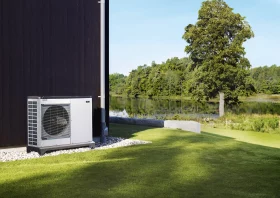






























































































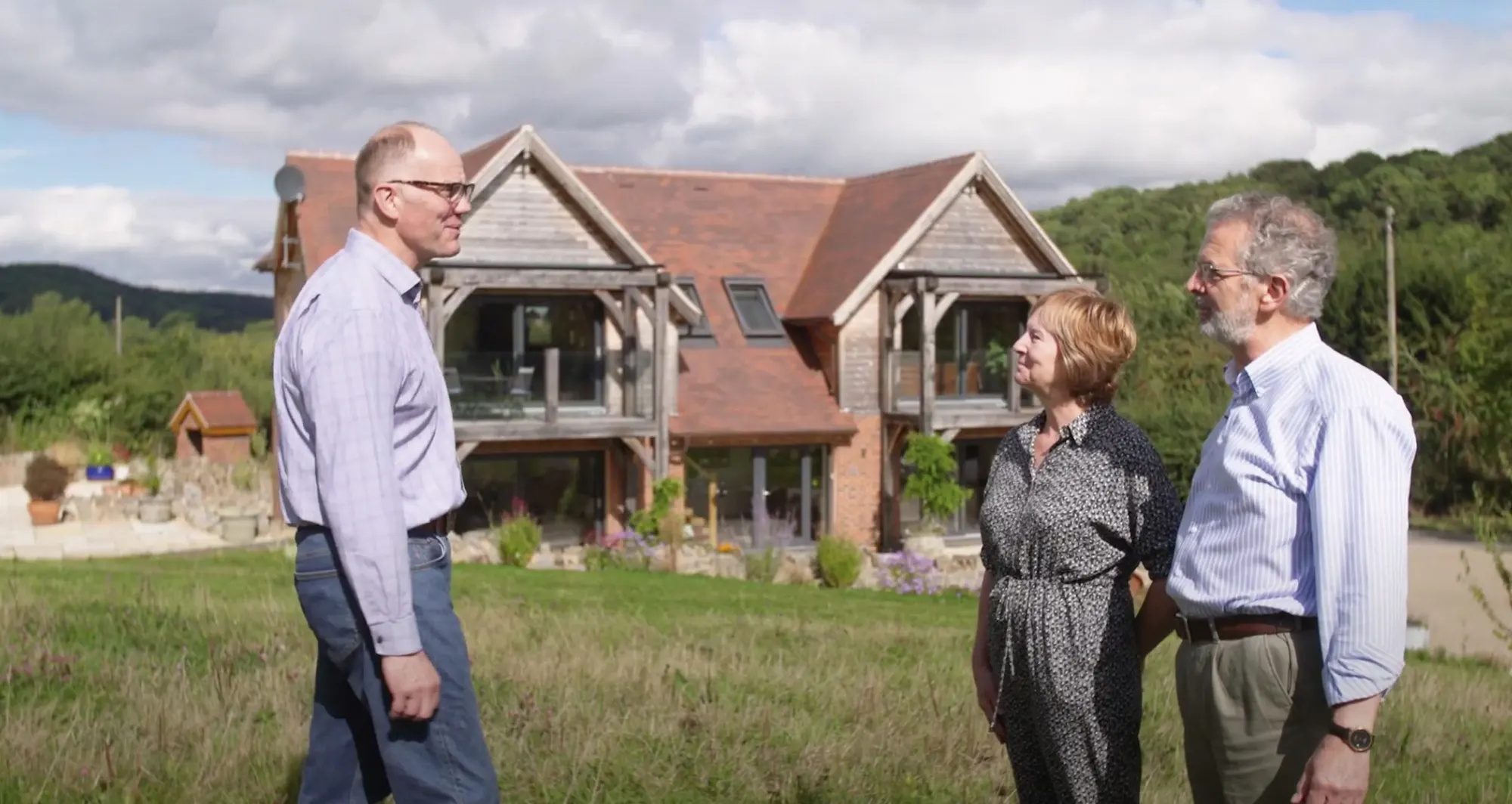
 Login/register to save Article for later
Login/register to save Article for later

